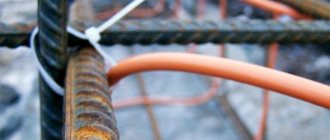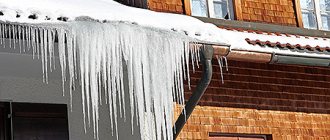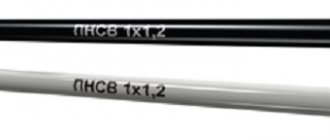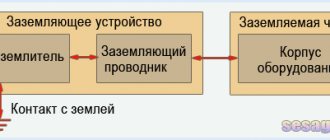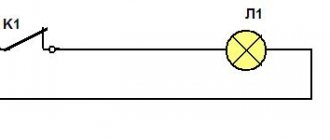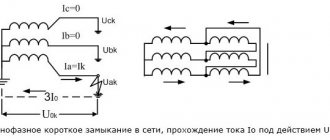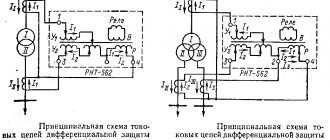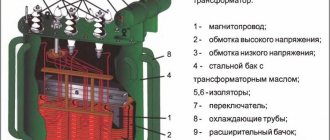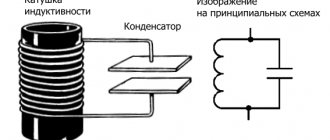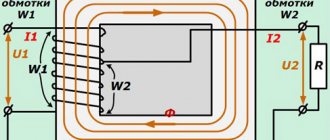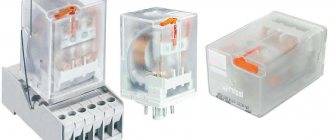Approximately 80% of Russian cities are located in a temperate continental and extreme continental climate, which is characterized by pronounced winters with severe frosts and precipitation in the form of snow. But even in this unfavorable time of year for construction, the construction of monolithic concrete structures does not stop. To create the necessary temperature conditions, there are different technologies:
- special greenhouses;
- heat mats;
- formwork with heating elements and electrodes;
- cable electric heating.
The first method is the most energy-intensive and therefore economically unprofitable. In the second case, thermal stations are installed that heat only the upper layers, and in some cases this is not enough. The third option involves installing electrodes in the solution and connecting them to the network through a welding machine or a step-down transformer. This method is energy-consuming, since water in concrete is a conductor, and its resistance increases significantly during hardening.
Heating concrete with cable is considered one of the most effective and economical methods. This will be discussed further. But first, let’s explain why all this is necessary.
Why heat up concrete?
When the air temperature is below zero, the mixture partially freezes instead of completely hardening. When it gets warm, the thawing process begins, as a result of which the concrete can collapse, which will negatively affect the solidity of the entire structure. Water will penetrate into the cracks that form, which will lead to a decrease in the service life of the building.
The result of pouring concrete in the cold
To prevent such consequences, it is necessary to organize concrete heating in winter. In this case, its structure will not be damaged, and the constructed structure will be durable.
Application
Warming up concrete in winter with a cable makes it possible to solve two main problems. At temperatures below zero, the water in the solution turns into ice crystals, and as a result, the cement hydration reaction not only slows down, it stops completely. It is known that when water freezes, it expands, destroying the bonds formed in the solution, so after increasing the temperature it will no longer gain the required strength.
The solution hardens at optimal speed and maintains characteristics at a temperature of about 20°C. As temperatures drop, especially below freezing, these processes slow down, even though hydration produces additional heat. In order to meet technical conditions, in winter it is impossible to do without heating the concrete with a PNSV wire or another cable intended for this purpose in situations where:
- sufficient thermal insulation of the monolith and formwork is not provided;
- the monolith is too massive, which makes it difficult to heat it evenly;
- low ambient temperature at which water in solution freezes.
Types of heating wires and cables
Most often, PNSV wires are used for electrical heating of concrete (heating wire with a steel core and PVC insulation). The popularity of this material is explained by its relatively low price and easy installation.
PNSV wire
PNSP can be used instead of PNSV. This wire features polypropylene insulation, which provides a slight increase in maximum heat output.
| Wire brand Parameters | PNSV | PNSP | ||||||
| Nominal value of electrical resistance of 1 m of heating core, Ohm | 0,12 | 0,18 | 0,22 | 0,11 | 0,12 | 0,14 | 0,18 | 0,22 |
| Conductor design | 1x1.2 | 1x1.1 | 1x1.0 | 1x1.4 | 1x1.2 | 1x1.3 | 1x1.1 | 1x1.0 |
| Nominal outer diameter, mm | 2,8 | 2,7 | 2,6 | 2,8 | 2,6 | 2,7 | 2,5 | 2,4 |
| Recommended wire length at voltage 220V, m | 110 | 95 | 80 | 130 | 100 | 110 | 85 | 75 |
| Estimated weight of 1 km of wire, kg | 19 | 18,5 | 18 | 16,4 | 12,7 | 14,5 | 11,1 | 9,6 |
Table of main parameters of PNSV and PNSP
Such wires are also used as floor heaters, which operate on the principle of a warm floor. When using thermal wires of this type, it is necessary to calculate their length. A small error can be corrected by adjusting the voltage level supplied from the transformer to heat the concrete.
The use of PNSV is effective, but is complicated by the need to install additional equipment to adjust the thermal power by changing the voltage. It is much easier to work with sectional thermal cables KDBS. They are directly connected to a 220V network, so they do not require any equipment to operate. You can buy such a heating cable in our stores in Moscow and the Moscow region.
Wire characteristics
The cable for heating concrete PNSV consists of a steel core with a cross-section from 0.6 to 4 mm², and a diameter from 1.2 mm to 3 mm. Some types are galvanized to reduce the impact of aggressive components in mortars. Additionally, it is covered with heat-resistant polyvinyl chloride (PVC) or polyester insulation; it is not afraid of kinks, abrasion, aggressive environments, is durable and has high resistivity. The PNSV cable has the following technical characteristics:
- The resistivity is 0.15 Ohm/m;
- Stable operation in the temperature range from -60°C to +50°C;
- Up to 60 m of wire is consumed per 1 cubic meter of concrete;
- Can be used at temperatures down to -25°C;
- Installation at temperatures down to -15°C.
The cable is connected to the cold ends through an aluminum autorecloser wire. Power can be supplied via a three-phase 380 V network by connecting to a transformer. With proper calculation, the PNSV can also be connected to a 220-volt household network; the length should not be less than 120 m. An operating current of 14-16 A should flow through the system located in the concrete mass.
Design and characteristics of the KDBS cable
The heating cable section KDBS is a heat-generating element based on a resistive heating cable in a protective PVC sheath. On one side it is equipped with an end coupling, and on the other - with a connecting coupling, installation wire and lugs for connecting to power. Any connecting wire is suitable for connecting to the network, for example, APV (aluminum conductors).
Technical characteristics of CBDS:
Example of heating section designation:
The nominal parameters of KDBS heating sections of fixed length and power are presented in the table:
Video
(function(w, d, n, s, t) { w = w || []; w.push(function() { Ya.Context.AdvManager.render({ blockId: 'RA-263154-214', renderTo : 'yandex_rtb_R-A-263154-214', async: true }); }); t = d.getElementsByTagName('script'); s = d.createElement('script'); s.type = 'text/javascript '; s.src = '//an.yandex.ru/system/context.js'; s.async = true; t.parentNode.insertBefore(s, t); })(this, this.document, 'yandexContextAsyncCallbacks ');
"+"ipt>";cachedBlocksArray = "
";cachedBlocksArray = "
";cachedBlocksArray = "
(function(w, d, n, s, t) { w = w || []; w.push(function() { Ya.Context.AdvManager.render({ blockId: 'RA-263154-181', renderTo : 'yandex_rtb_R-A-263154-181', async: true }, function() { var g = document.createElement('ins'); g.className = 'adsbygoogle'; g.style = 'display:block;text -align:center;width:660px;height:420px;' g.setAttribute('data-ad-client', 'ca-pub-5399081021257607'); g.setAttribute('data-ad-slot', '6458750303' ); g.setAttribute('data-ad-format', 'Rectangle'); g.setAttribute('data-ad-layout', 'true'); g.setAttribute('data-full-width-responsive', 'in-article'); document.getElementById('yandex_rtb_R-A-263154-181').appendChild(g); (adsbygoogle = window.adsbygoogle || []).push({}); }); }) ; t = d.getElementsByTagName('script'); s = d.createElement('script'); s.type = 'text/javascript'; s.src = '//an.yandex.ru/system/context. js'; s.async = true; t.parentNode.insertBefore(s, t); })(this, this.document, 'yandexContextAsyncCallbacks');
"+"ipt>";cachedBlocksArray = "
(function(w, d, n, s, t) { w = w || []; w.push(function() { Ya.Context.AdvManager.render({ blockId: 'RA-263154-180', renderTo : 'yandex_rtb_R-A-263154-180', async: true }, function() { var g = document.createElement('ins'); g.className = 'adsbygoogle'; g.style = 'width:580px;height :400px;top:0;right:0;bottom:0;left:0;margin:auto;display:block;'; g.setAttribute('data-ad-client', 'ca-pub-5399081021257607'); g.setAttribute('data-ad-slot', '5810429370'); document.getElementById('yandex_rtb_R-A-263154-180').appendChild(g); (adsbygoogle = window.adsbygoogle || []).push ({}); }); }); t = d.getElementsByTagName('script'); s = d.createElement('script'); s.type = 'text/javascript'; s.src = '// an.yandex.ru/system/context.js'; s.async = true; t.parentNode.insertBefore(s, t); })(this, this.document, 'yandexContextAsyncCallbacks');
"+"ipt>";cachedBlocksArray = "
";cachedBlocksArray = "
";cachedBlocksArray = "
(function(w, d, n, s, t) { w = w || []; w.push(function() { Ya.Context.AdvManager.render({ blockId: 'RA-263154-162', renderTo : 'yandex_rtb_R-A-263154-162', async: true }, function() { var g = document.createElement('ins'); g.className = 'adsbygoogle'; g.style = 'width:580px;height :400px;top:0;right:0;bottom:0;left:0;margin:auto;display:block;'; g.setAttribute('data-ad-client', 'ca-pub-5399081021257607'); g.setAttribute('data-ad-slot', '2323428743'); document.getElementById('yandex_rtb_R-A-263154-162').appendChild(g); (adsbygoogle = window.adsbygoogle || []).push ({}); }); }); t = d.getElementsByTagName('script'); s = d.createElement('script'); s.type = 'text/javascript'; s.src = '// an.yandex.ru/system/context.js'; s.async = true; t.parentNode.insertBefore(s, t); })(this, this.document, 'yandexContextAsyncCallbacks');
"+"ipt>";cachedBlocksArray = "
";cachedBlocksArray = "
";cachedBlocksArray = "
";cachedBlocksArray = "
(function(w, d, n, s, t) { w = w || []; w.push(function() { Ya.Context.AdvManager.render({ blockId: 'RA-263154-217', renderTo : 'yandex_rtb_R-A-263154-217', async: true }); }); t = d.getElementsByTagName('script'); s = d.createElement('script'); s.type = 'text/javascript '; s.src = '//an.yandex.ru/system/context.js'; s.async = true; t.parentNode.insertBefore(s, t); })(this, this.document, 'yandexContextAsyncCallbacks ');
"+"ipt>";cachedBlocksArray = "
";cachedBlocksArray = "
"+"ipt>
(adsbygoogle = window.adsbygoogle || []).push({});
"+"ipt>";
Technology for heating concrete using PNSV
The principle of operation is simple: when voltage is applied, the wire heats up and heats up the concrete. A voltage of 70V is required for heating, so a step-down transformer KTPTO or TSDZ of appropriate power is required for operation.
Transformer for heating concrete TSDZ-80/0.38
Before starting installation, you need to calculate how many meters of heating wire are required. The calculation takes into account:
- wire type and characteristics;
- transformer substation voltage;
- characteristics of a monolithic concrete structure - reinforced or unreinforced, length, width, height, volume.
In order not to get confused and get accurate numbers, you can use the online calculator “Calculation of heating wire PNSV”.
In addition, you need to take into account the current strength. For a cable immersed in concrete, this figure should be 14-18A, depending on the connection diagram.
In practice, the connection is made in a “triangle” or “star”. In the first scheme, the wires are equally divided into three groups and the wires in them are connected to each other in parallel. Then the resulting sets are combined at the ends into three nodes and connected to the three output terminals of the warm-up transformer. The “star” connection diagram involves the use of a set of “triples”, which are three pieces of wire of the same length, combined on one side into a node. The remaining ends of the “triples” are connected into three nodes, and then connected to the output terminals of the PT.
Electrical connection diagram for PNSV
Installation of PNSV
After all calculations have been completed and the technical map has been approved, installation of the heating cable begins. PNSV is installed after the creation of reinforcing frames, installation of embedded elements and completion of welding work. The wire is wound onto a metal frame or laid between the fittings in the form of a “snail” or “snake”. There should be no tension. Contact of PNSV with each other and with the formwork is not allowed.
Important! The cable must be completely encased in concrete, otherwise it will burn.
Electrical connection diagram for PNSV
The PNSV cable cannot be used in air, so so-called “cold ends” made of thicker wire are installed on its terminals by soldering, which are connected to a step-down transformer. A test check must be carried out using a megohmmeter, and the measured current load in phases is also measured. Once the system is operational, concrete is poured.
Next, they wait for the initial setting and turn on the transformer:
- Heating is performed at a rate of no more than 10°C per hour. In this case, the entire volume will be heated evenly.
- Concrete must be heated until it reaches 50% technological strength. The maximum permissible temperature is 80°C, optimally 60°C.
- The concrete should cool at a rate of approximately 5°C per hour, then it will not crack and will turn out monolithic.
If technological standards are met, then the concrete will gain the strength grade corresponding to its composition. After completion of the work, the cold ends are cut off, and the heating wire remains in the thickness of the concrete.
Length calculation
To calculate the length of the PNSV wire for heating concrete, several main factors must be taken into account. The main criterion is the amount of heat supplied to the monolith for its normal hardening. It depends on the ambient temperature, humidity, the presence of thermal insulation, volume and shape of the structure.
Depending on the temperature, the cable laying pitch is determined with an average loop length of 28 to 36 m. At temperatures down to -5°C, the distance between the cores or pitch is 20 cm, with a decrease in temperature for every 5 degrees, it decreases by 4 cm, at - At 15°C it is 12 cm.
When calculating the length, it is important to know the power consumption of the PNSV heating wire. For the most popular diameter of 1.2 mm, it is equal to 0.15 Ohm/m; for wires with a large cross-section, the resistance below a diameter of 2 mm has a resistance of 0.044 Ohm/m, and 3 mm – 0.02 Ohm/m. The operating current in the core should be no more than 16 A, therefore the power consumption of one meter of PNSV with a diameter of 1.2 mm is equal to the square of the current and the resistivity and is 38.4 W. To calculate the total power, you need to multiply this figure by the length of the laid wire.
The voltage of the step-down transformer is calculated in a similar way. If 100 m of PNSV with a diameter of 1.2 mm are laid, then its total resistance will be 15 Ohms. Considering that the current is no more than 16 A, we find the operating voltage equal to the product of the current and the resistance; in this case it will be equal to 240 V.
The use of PNSV wire is one of the cheapest ways to heat concrete. But it is more suitable for use by professional builders, since its connection requires special knowledge and equipment. This cable can also be used at home if you correctly calculate the power consumption. The use of thermal insulation materials will help reduce costs when heating the solution; in this case, heating will occur faster, and the temperature decrease will occur more evenly, which will improve the quality of concrete.
Welding machine as a step-down transformer
When pouring a small volume, the wire for heating concrete can be connected to a powerful welding machine with an output current of 150-250A. This will save on renting a step-down transformer. Let's give an example of how this method can be implemented.
Task: pour a slab with a volume of 3.6 m3, at an air temperature of 10°C.
Required:
- welding machine 200−250A;
- current clamps;
- PNSV wire;
- Automatic reclosure for cold ends;
- fabric-based electrical tape.
PNSV must be cut into segments of 18 m each. Each such segment can withstand current up to 25A. You can connect 10 such segments to a 250A welding machine (25×10=250A). But in order to prevent overload, it is worth leaving some reserve, so we will take 8 segments.
We screw the autorecloser to each output and insulate the connection point. The length of the wire should be enough to reach the welding machine, and the twist itself should be placed in concrete.
Next, the PNSV is laid according to the diagram below. The cold ends are connected by a terminal block ((+) and (-) separately), which is placed on an insulating material, for example, textolite.
Connection diagram of PNSV to the welding machine
Having completed pouring the concrete, we set the minimum current on the welding machine and connect the terminals to its forward and reverse outputs. We measure the current on all segments; it should be no more than 20A. During heating, the current will drop, then we increase it on the device.
Method of heating reinforced concrete
The main advantage of this technology over other heating methods is the absolute absence of heat loss, since thermal energy remains in the surrounding concrete mass. The costs of heating the cable and transferring heat into the body of the concrete structure are minimal compared to other heating technologies.
The next, undoubtedly, big advantage is the ease of implementation of this method. After calculations, it is enough to select the right heating element, connection and installation diagram, select the appropriate voltage, and the final result can be achieved without resorting to the services of builders and electricians.
The technology itself consists of several stages, the first of which is the construction of formwork or a form of the corresponding structure, into which the reinforced frame, heating wire will be laid and concrete will be poured, which must be compacted with an in-depth vibrator before applying voltage to the circuit.
Pouring the solution into the prepared form
https://youtube.com/watch?v=Mi9bK_pcfcI
Some features that PNSV or KDBS have, which are used to warm up the concrete mass, allow the circuit to more efficiently convert voltage electricity into heat, the main thing is to calculate everything correctly. This heat warms the concrete, speeding up its setting and hardening.
Professional builders know and understand the difference between heating wire and cable, and individual developers will find it useful to have an idea about this, which will help them use the technology correctly and more efficiently. The heating method using a cable is more expensive for the following reasons:
- Heating of reinforced concrete is carried out by connecting the circuit to a reduced voltage through a special step-down transformer in order to prevent the leakage of dangerous voltage into the structure through wet metal reinforcement in the event of accidental damage to the insulation.
- The heating KDBS can be connected to a network of at least 220V. Optimally - 220V or 380V without reducing the mains voltage.
Connecting PNSV or KDBS is easier in terms of organizing the workflow - connections are made through special couplings, and the cable does not need to be shortened or extended. But a heating cable is more expensive than a wire, so in individual construction it is used at the discretion of the owner. Another disadvantage of cables is that they cannot be reused.
KDBS for heating concrete
Wire differences:
- Externally, a wire can be distinguished from a cable by the following characteristics: a wire usually has one core, a cable has two or more.
- The wire has nominal temperature limits when heating concrete – ± 55°C.
- Maximum current – 16 A.
- The cross-section is 0.6-3 mm, which allows you to bend the wire in any direction and use complex laying patterns. You can use a special calculator to calculate the wire cross-section.
- Wire consumption for heating 1 m3 of concrete solution is 50-55 m.
Advantages and disadvantages of PNSV
Heating concrete using PNSV is quite beneficial:
- low cost;
- relatively low power consumption;
- resistance to alkalis and acids that may be contained in the mixture when various additives are added to it.
This method also has disadvantages:
- complex calculation of wire length;
- using a step-down transformer.
PT is expensive, and renting it is not profitable, since such services can cost up to 10% of the cost of the product. Welding machines are only suitable for heating small volumes. They are not designed for this mode of operation and may fail, which will entail costs for repairs or the purchase of a new device.
Physical hardening process
Concreting is one of the most common technological processes in construction. It is used not only to create foundations, but also various floors, supports and main walls. Hardening of a cement-sand or cement-gravel mixture occurs during a chemical hydration reaction, when water molecules and substances dissolved in it create a new chemical compound.
It is irreversible and is accompanied by the release of a certain amount of heat, which, at positive external temperatures, maintains the interaction of substances during the first seven days after pouring concrete into the formwork.
However, it may not be enough if construction is carried out during the demi-season, and even more so in winter, when outside temperatures drop significantly below zero. In this case, some of the substances do not enter into a chemical reaction, which significantly reduces the actual strength of concrete structures.
In addition, unspent water freezes and expands, destroying them from the inside. To prevent this from happening, various methods of heating the poured mass are used. The simplest and most effective is to lay a heat-generating electrical cable inside the array, which is the PNSV wire.
This is interesting: Water repellent - what it is and what it is like
Installation of heating section KDBS
The cable is laid on the reinforcement with a pitch of 70 mm. After installing the formwork and pouring concrete, the KDBS is connected to the electrical network. When the concrete has completely hardened, the cable is disconnected from the power supply, the ends are cut off and left in the monolithic structure.
Recommendations for calculating power and laying heating sections of KDBS:
- As a rule, 1 m2 of heated surface requires 4 m of cable.
- The approximate power for heating 1 m3 of concrete structure is 0.4-1.5 kW. When calculating this parameter, the thickness and material of the formwork, the concrete additives used, air temperature, and wind are taken into account.
- The cable is laid in the concrete mass at a depth of about 20 cm.
- The entire cable must be evenly distributed over the heated surface.
- Crossing the cable is not permitted.
- At the junction with non-thermally insulated surfaces, it is necessary to install another heating section with a separate control system.
- You cannot use the same section to heat two or more objects with different heat transfer conditions.
Installation of sectional heating cable
Heating wire in the formwork
When installing a sectional heating cable, there is no issue with cutting, since the heaters are sold in ready-made sections, and not in coils. For concreting in winter, it is necessary to calculate the power of the heating element based on the concrete cubes used in the monolithic concrete structure.
The TMO technology for concrete is accompanied by instructions, which indicate that for heating 1 cubic meter. the building mixture will require from 500 to 1500 W. It all depends on the weather conditions outside. If you use a few simple technical techniques, you can significantly reduce your energy costs:
- pre-insulate the formwork;
- use special nozzles for the mixture that allow you to lower the freezing point of the solution.
If floors or beams are to be poured, the required material is calculated based on 4 linear meters for each square meter of surface. If three-dimensional structures are to be erected, for example, I-beams of concrete, electric heating is laid in tiers with an interval of no more than 0.4 meters. The protection of the heating wires allows them to be securely wound to the fittings.
The interval between the electric heater and the surfaces of the structure must be at least 20 cm. For uniform heating, the distance between the cables must be the same.
Advantages and disadvantages of segmented cable
KDBS cable for heating concrete
Segmented wires have undeniable advantages in comparison with their analogues:
- simple calculation of the length of the required heating element, ease of installation;
- the probability of electric shock is minimal;
- To organize the heating of building materials, the additional use of expensive equipment is not required.
The disadvantages include the relatively high cost.
How does a temperature below zero prevent concrete from hardening?
When mixing the binder (cement) and fillers (sand and crushed stone) with water - during the production of concrete - a complex chemical reaction occurs. It consists in the phenomenon of hydration: the formation of gel-like particles, which looks like thickening of cement. It occurs due to the formation of needle-shaped crystals throughout the mixture. The hydration process completely changes the structure of concrete from aluminate to silicate - after 6-8 hours, during which the concrete thickens, in the next 16-20 hours it hardens. Then it gains strength for another 28 days.
So, if this process is prevented by the transformation of water into ice, nothing will happen: the structure of the cement mortar will not change and, even after the water freezes, the mixture will no longer turn into stone. Therefore, it was necessary to find a method that would make it possible for the cement-sand mixture to harden and gain the strength of concrete stone even at negative air temperatures.
Several such methods have been found, each of them is determined by the construction conditions for which it was developed. The most popular of them: the thermos method, electric heating, thermoactive formwork and steam heating. Let's talk about each of them.
Using PNSV wire after hardening
Heating cable sections laid in a concrete structure remain in it forever and do not lose their resistive properties. Therefore, it makes sense to use them to improve the comfort of your stay. Often, the PNSV wire is specially laid in a concrete floor screed. However, this is not the best solution, although it is the most budget-friendly.
When placing the heating element under the floor covering, possible obstacles to the dissipation of the generated heat should be taken into account. In living rooms, these are places where cabinet furniture is installed, the base of which fits tightly to the floor. Local overheating zones appear in them.
With prolonged use, the wire gradually becomes thinner and eventually breaks. Replacing it is extremely difficult, as it requires removing the floor covering and destroying the concrete screed.
The solution to the problem is to use a self-regulating heating wire. Its design consists of two copper cores, between which there is a so-called thermal matrix - a semiconductor element whose conductivity changes as it heats up. The higher the temperature, the higher the resistance. This causes the current flowing through this area to decrease, causing it to cool down.
Such a heating element works at any size - from a piece a few centimeters long to a multi-meter section. It can be crossed with others similar to it (this is strictly forbidden to do with a PNSV wire due to the danger of melting the insulation and causing a short circuit). The main disadvantage of self-regulating heating wire is the cost. It is several times higher than a single-core resistive one.
https://youtube.com/watch?v=ITujT-WErts
Warming up the poured concrete mass using the PNSV heating cable allows you to reduce the time to achieve 80% of the structural strength from seven days to two to three days and not stop work with the onset of cold weather. However, the technology of this process is quite complex; usually its scheme is developed for each specific case. Therefore, do not be seduced by its apparent simplicity. Contact professionals, and in their absence, thoroughly study the issue yourself.
Installation of PNSV
The layout of the PNSV wire must be thought out at the design stage of the facility. The main thing is its installation in the formwork before pouring the concrete solution begins. In most cases, aluminum wire is used to attach the wire to the fixture.
To ensure that the heating of the concrete mixture is as uniform as possible, the sections are mounted at an equal distance from each other both vertically and horizontally. The distance between adjacent ones should be about 15 centimeters.
It is important to note that if the network voltage is 380 volts, the length of the segment should be 31 linear meters, if 220 - 17 meters. Only in this case will the mixture be heated evenly, which means it will achieve the maximum possible strength. If the section is mounted longer, the thermal energy will not reach the most remote areas.
It is important to remember that connecting the wire to the network must be done outside the formwork.
In most cases, this is achieved by connecting a cable with aluminum cores and wrapping it tightly. When the concrete mixture has completely hardened, the wire cannot be pulled out of it; it remains inside forever and can subsequently be used as a “warm floor.”
Basics of laying and installation technology
After purchasing the necessary heating material, the production of the heating system begins:
- The purchased coil or reel is cut into heating sections, the lengths of which are determined by the specifications, in the required quantity. It is possible to manufacture sections from segments, ensuring reliable connection contact;
- The ends are stripped to 4 cm, and “cold ends” are connected to them - pieces of insulated aluminum conductor of sufficient length to connect to the transformer. A reliable insulated connection must be located inside the heated volume;
- Heating sections are placed in the formwork. Measures are being taken to ensure the correct location, absence of sagging, and care for the boundaries of the future monolith. If reinforcement is used, you can tie it to it; It is not allowed to cross or touch wire sections within the formwork. The distance between the wires is at least 15 cm.
- To improve the uniformity of heat distribution, it is recommended to wrap the wire with thin metal foil 0.2÷0.5 mm thick;
- All marked “Cold ends” after installation should be located at one edge;
When heating concrete on construction sites, ensuring electrical safety requirements, it is necessary to take measures to fence off the dangerous area and limit the presence of unauthorized persons in it.
Once completely dry, using floor or wall heating is not dangerous.
